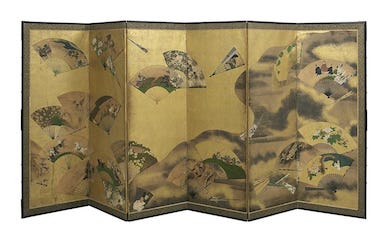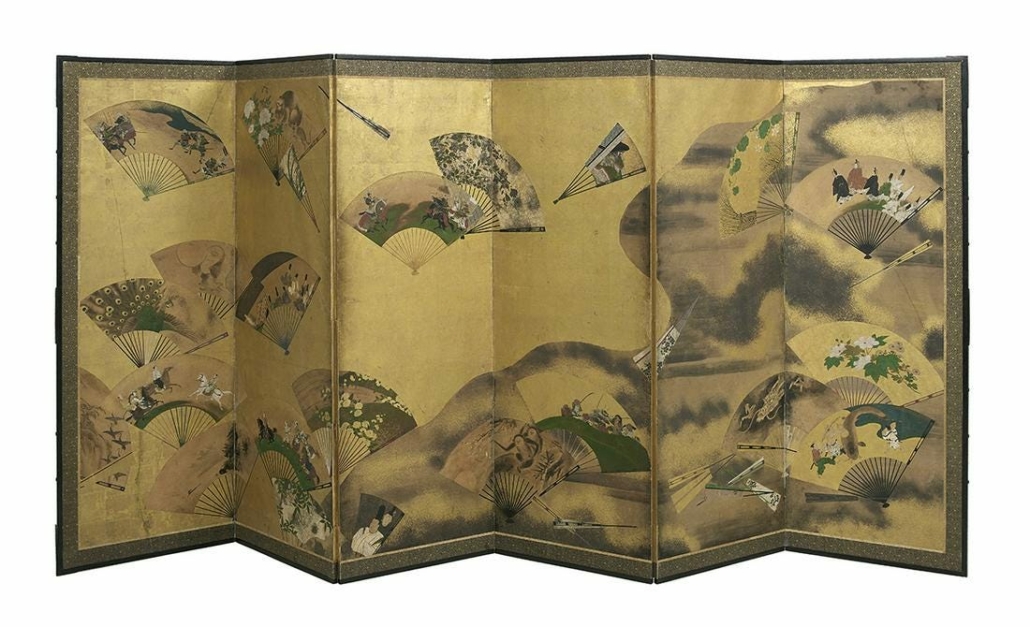
NEW YORK — Folding screens are endlessly versatile and can be used to divide a room into spaces with different uses or make a design statement on their own. While they can be made of wood that is carved and painted, those that feature paper panels are especially beautiful, and those that boast multiple layers of paper are most desirable of all.
Decorative folding screens have been made in many countries over many centuries, but Asian folding screens are some of the oldest known. Reportedly invented during the Han dynasty (206 BC – 220 AD), these objects were originally created to stop drafts. Its Mandarin name, pingfeng, translates as “screen” or “blocking,” and the Japanese term for folding screen is byobu, meaning “wall wind.” Over time, folding screens, whether decorated with calligraphy or painted scenes, became celebrated as art objects.
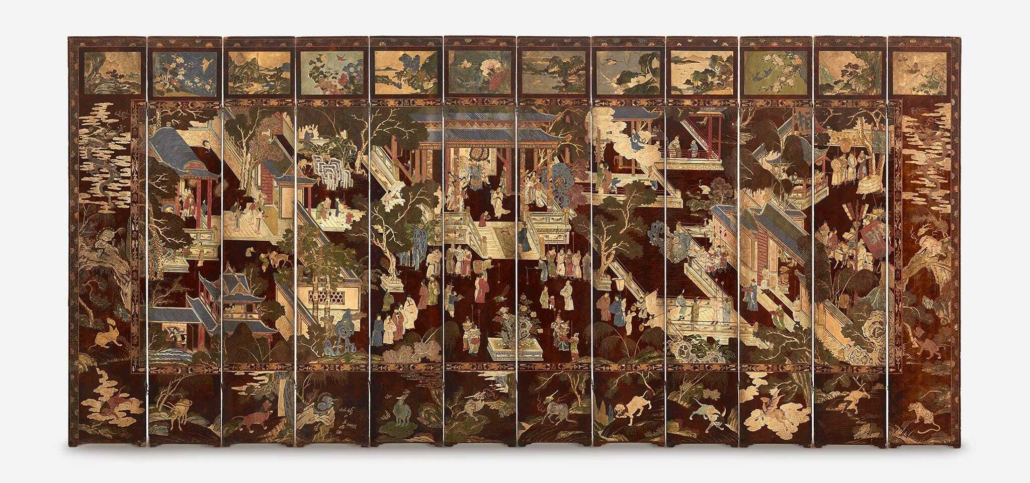
Interestingly, among antique folding screens, Asian examples often survive better than their Western counterparts, as they were not treated as movable furniture but as beloved artworks and were handled as gently as if they were delicate scroll paintings.
Chinese screens might be the oldest and best known, but Japanese screens are also noted for their beauty. The artistry and craftsmanship that went into them is not surprising, considering some were used in tea ceremonies, as backgrounds for concerts, and as partitions during Buddhist rites.
One notable Japanese example is a six-panel folding screen that sold for $46,000 plus the buyer’s premium at New Orleans Auction Galleries in May 2020 (shown at top of page). It dates to the Edo period, 18th century, and was made at the Rinpa school, one of the major schools for Japanese painting. Rinpa school works are known for their bold, stylized depictions of nature, typically set against gold or a metallic background. This screen features ink and gouache on a gold leaf ground and is decorated with 35 folding fans – some shown fully opened, others partially opened, and a few closed. The fans contain imagery from Japanese history and culture, including scenes from the The Tale of Genji, a classic Japanese work of literature from the 11th century; as well as animals, landscapes, and floral sprays.
“The exquisite example offered here encapsulates the extraordinary skill and decorative range of the era, incorporating intricately cut and applied paper fans with an ambitious design harking back to the Momoyama period,” say New Orleans Auction Gallery’s catalog description.

A research paper published by the Smithsonian Center for Materials Research and Education explains that Asian folding screens immediately captivated Western audiences, who then imported the objects before producing their own variations. “It was during the zenith of screen development in the East that Western traders, who had arrived in Malacca (Malaysia) in 1543 from Portugal, became acquainted with the beauty and utility of screens, taking a special interest in the folding variety,” the paper said.
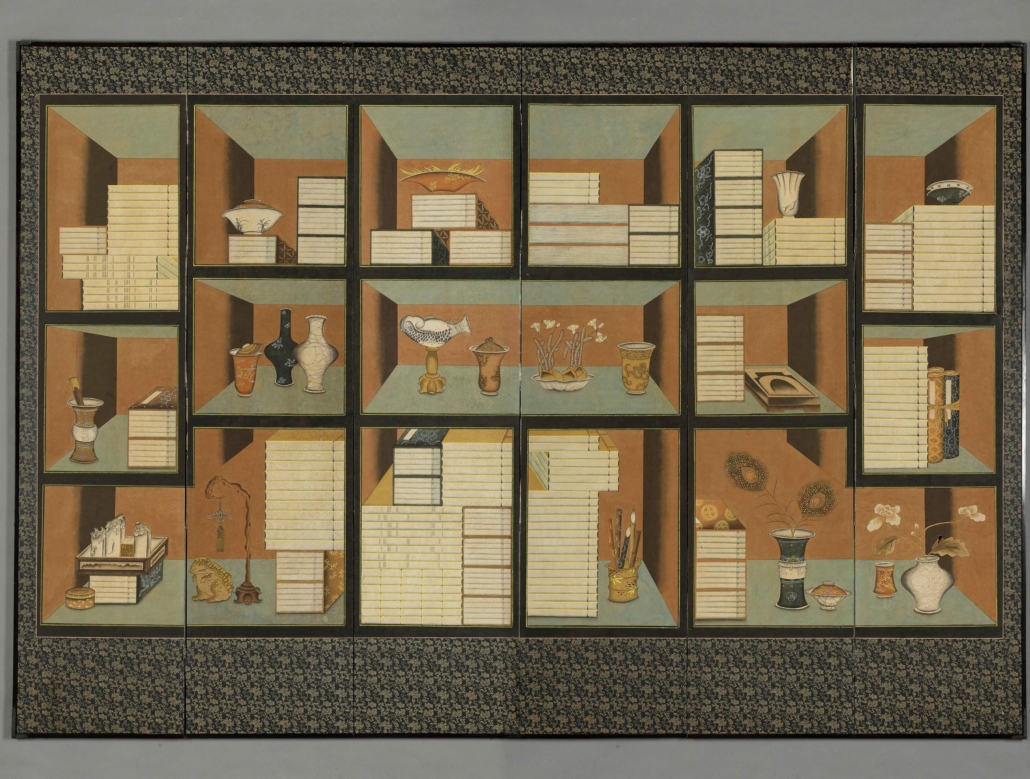
Folding screens are often decorated with scenes from nature, art, history, mythology, and palace life. Auspicious animals and motifs are common on Chinese screens; dragons and peacocks are favorites. A two-panel Japanese folding screen, which fetched $69,425 plus the buyer’s premium in May 2021 at Bonhams London, featured pieces representing book covers with designs such as shuro palms, pines, and chrysanthemum, all mounted on silver leaf over paper. The silk-embroidered pieces were sewn with gold threads.
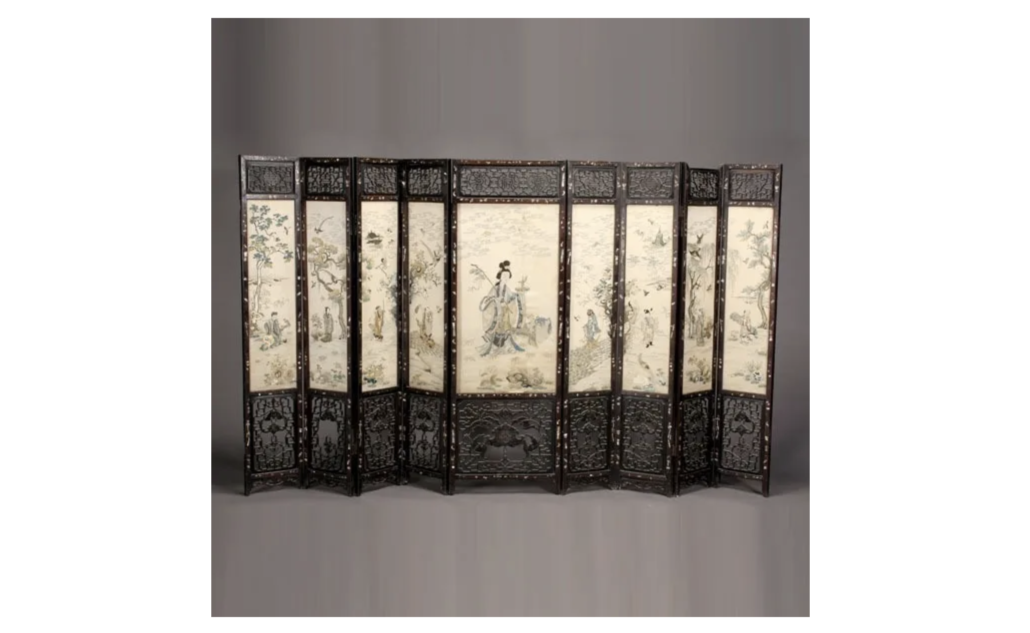
Naturalistic motifs are prevalent, but many screens also contain figures. A late Chinese Qing Dynasty folding screen with nine embroidered panels and inlays that sold in December 2011 for $50,000 plus the buyer’s premium at Michaan’s Auctions depicts the eight Immortals, figures who loom large in Chinese mythology. On each panel, except for the central and largest panel, one figure stands under clouds and bats amid a landscape. The center panel of the folding screen is devoted to the image of a “Mother of the West” figure, who carries a flower basket and has a lion at her side.
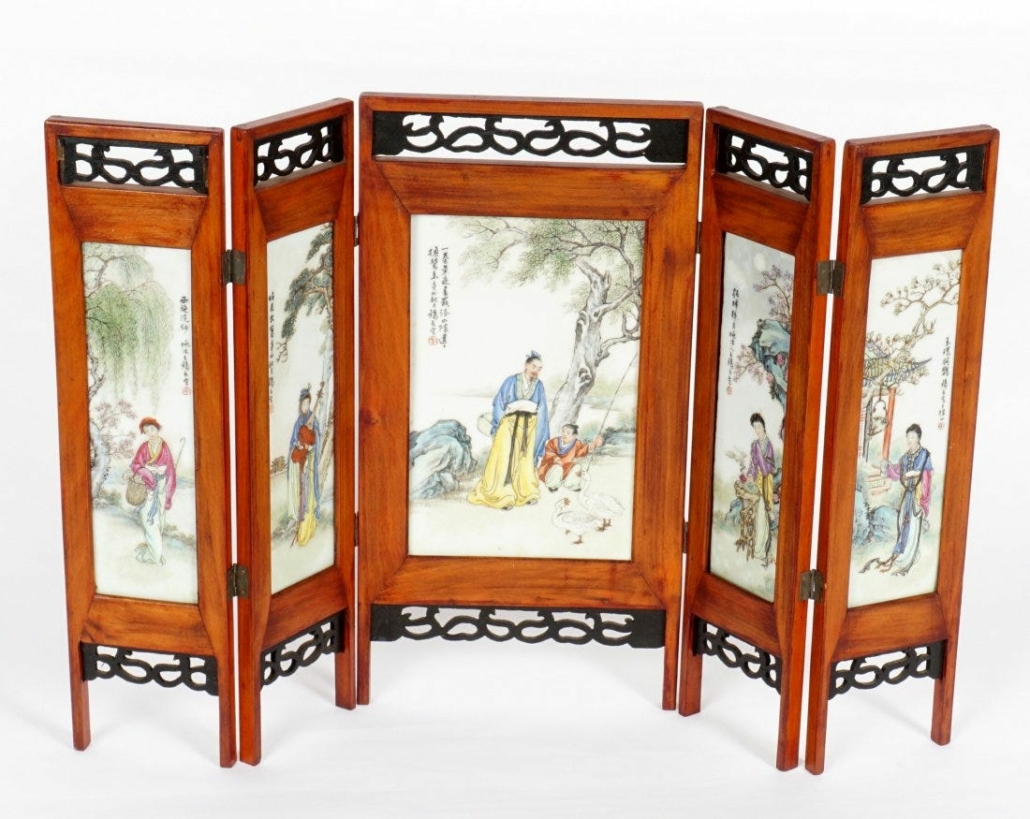
Antique folding screens are delicate, so it’s important not to move them around too much. Regardless, they are well suited to decorate modern homes. Small ones, such as two-panel screens, can be perfect for covering a fireplace, while tall and large examples can be deployed in a bedroom to create a dressing area or a small home office. Sometimes they are mounted to a wall above a bed, serving as an elegant faux headboard. They can also hide flaws, such as unsightly plumbing, or conceal clutter, all the while rendering elegance and flair to a room’s decor.
# # #


